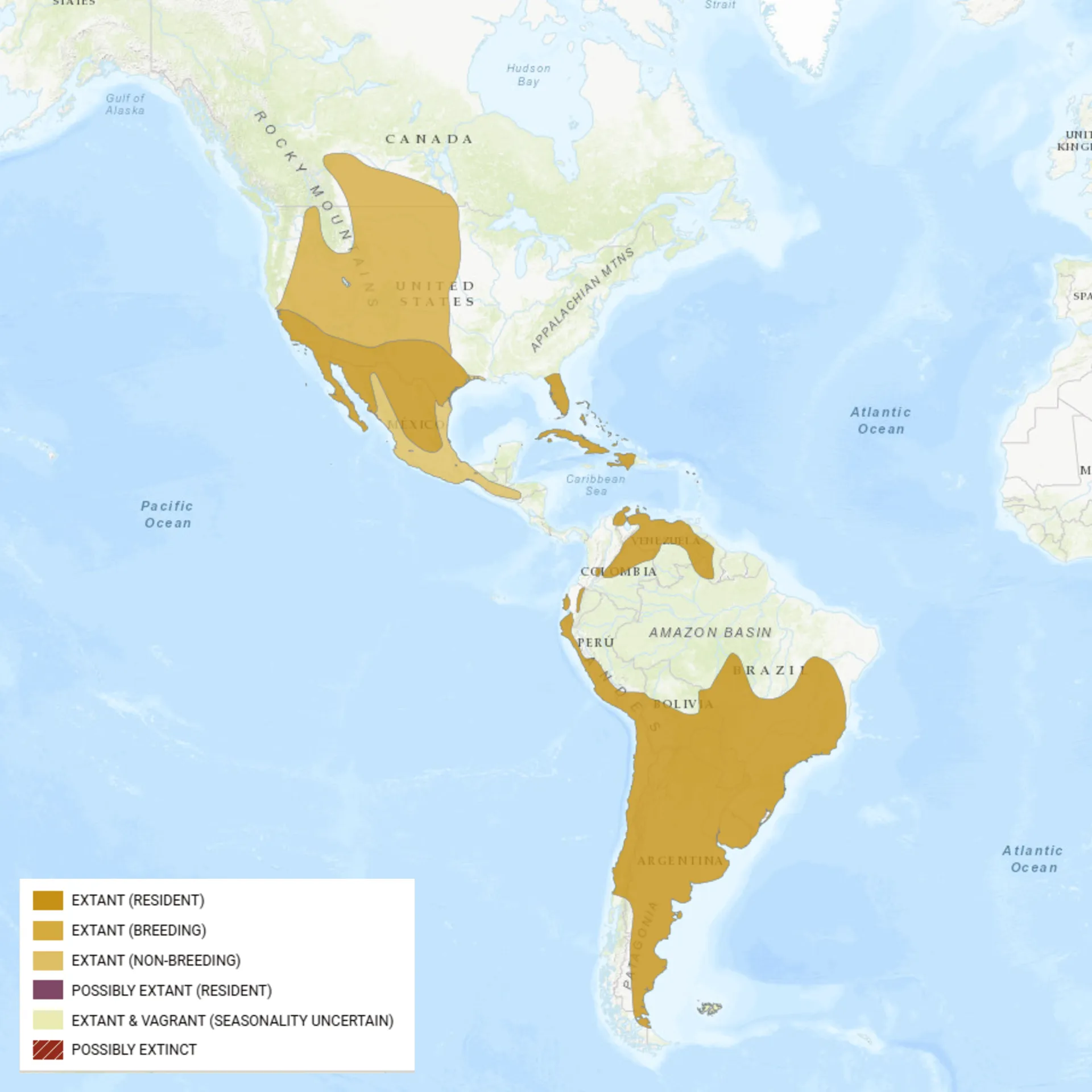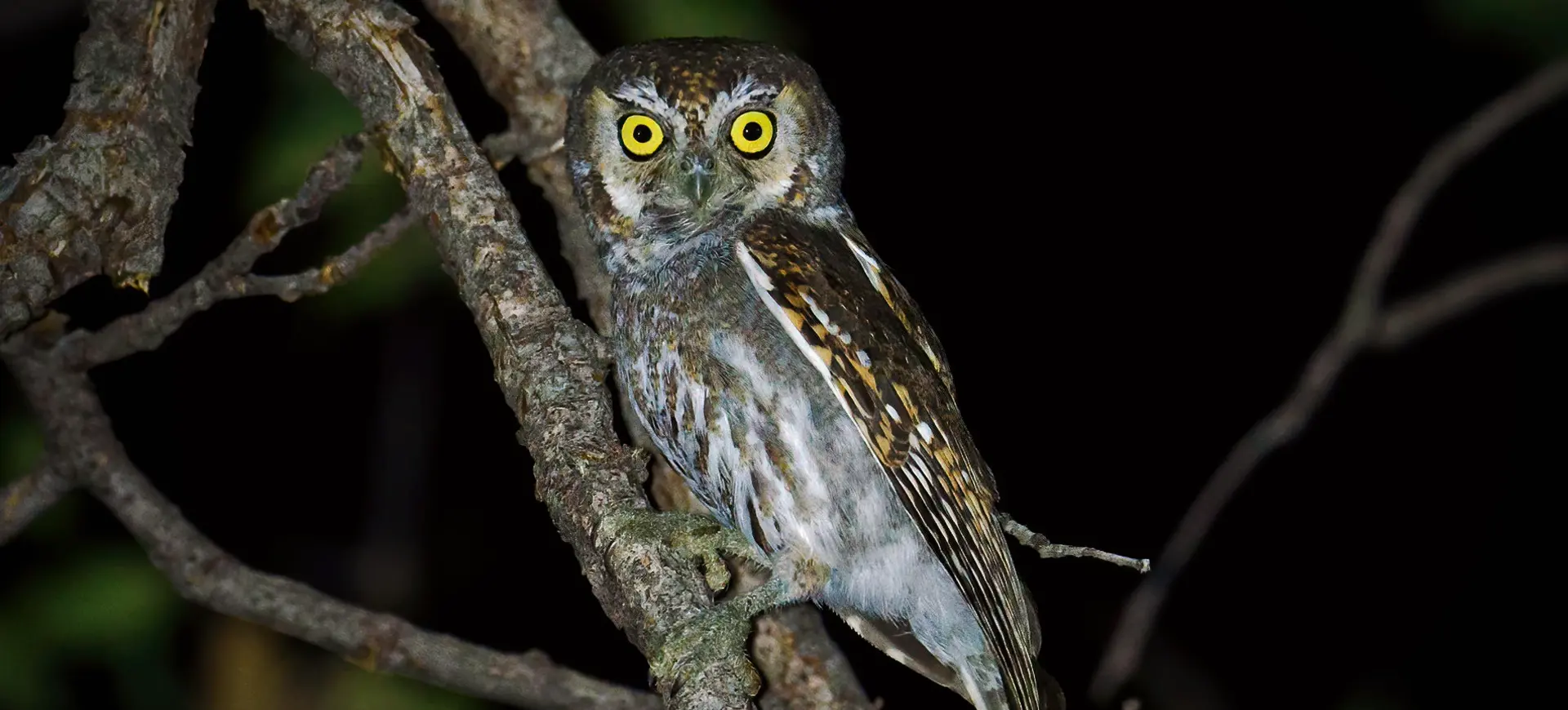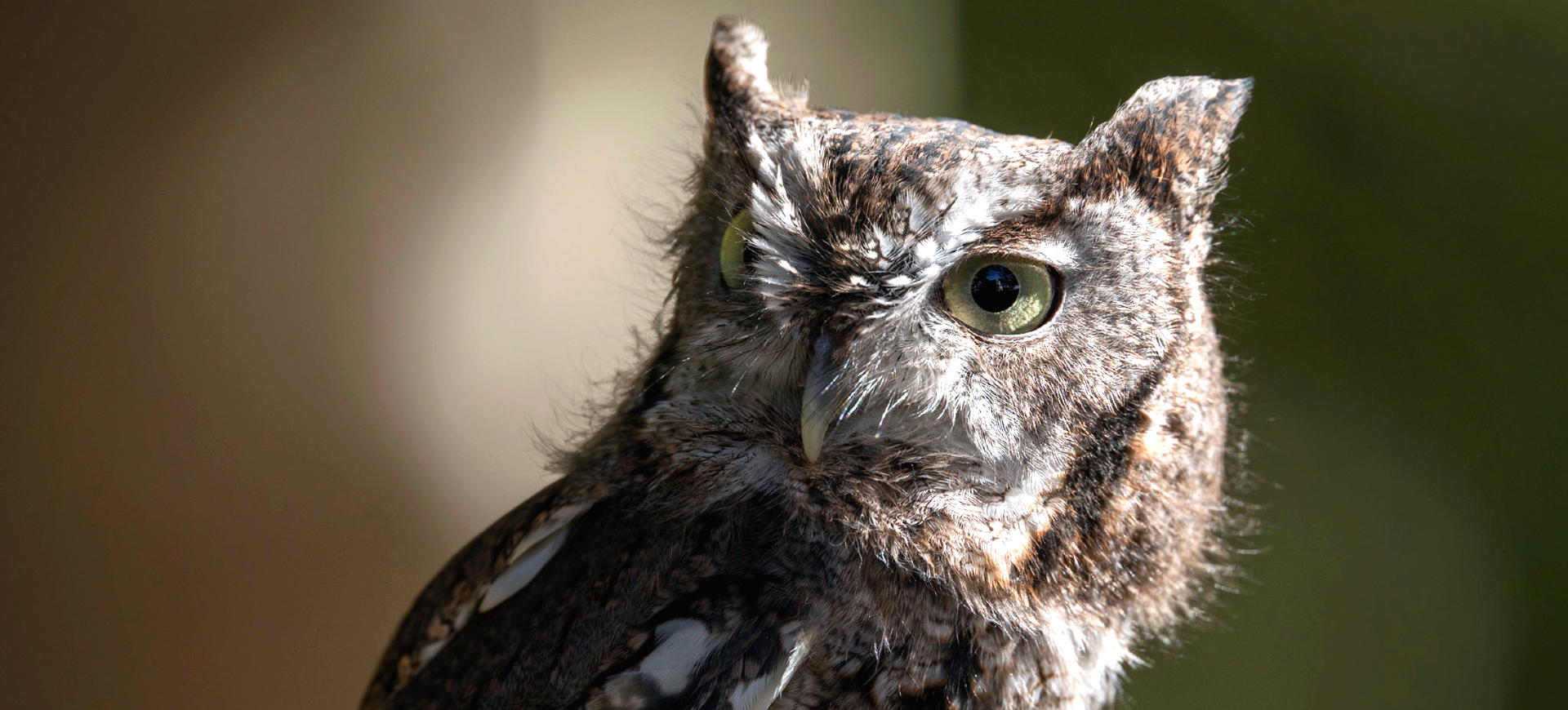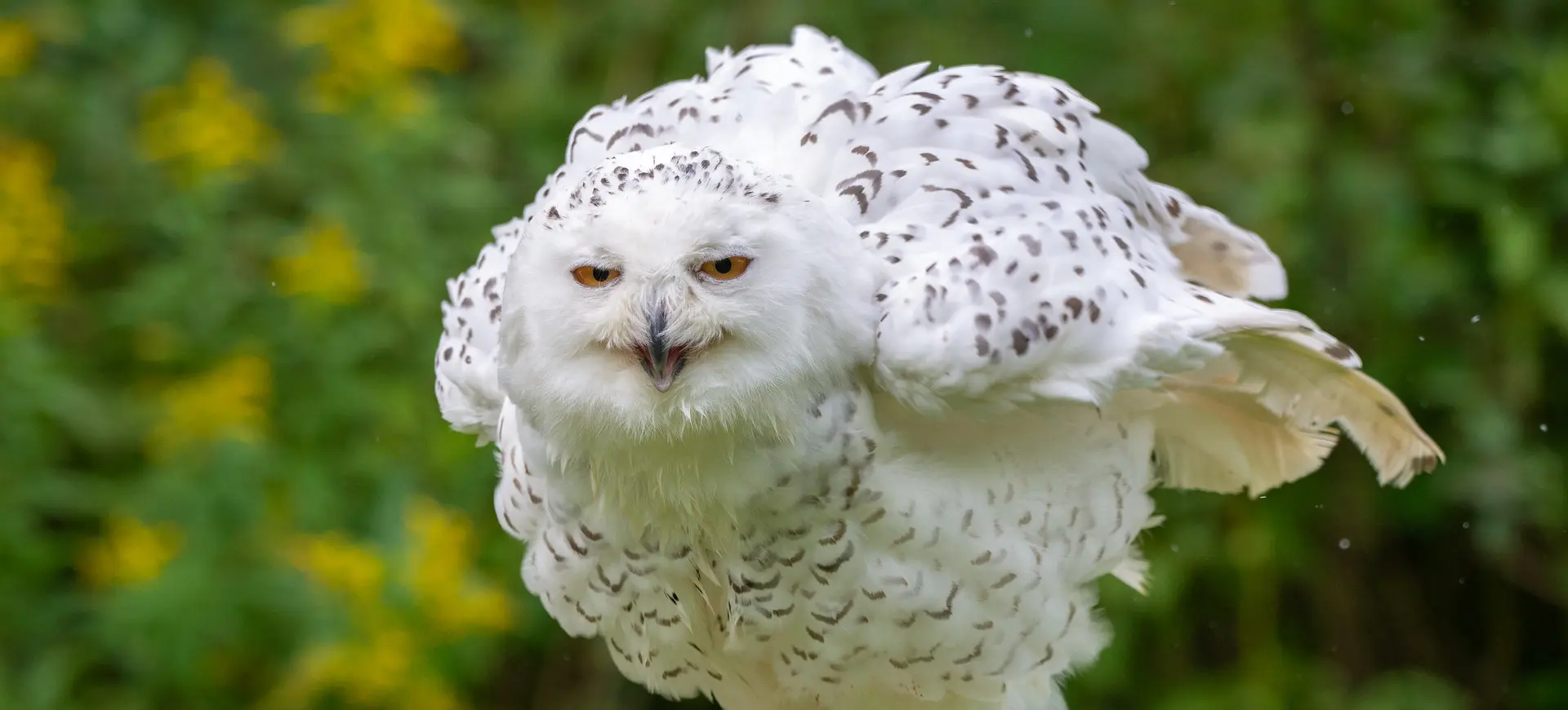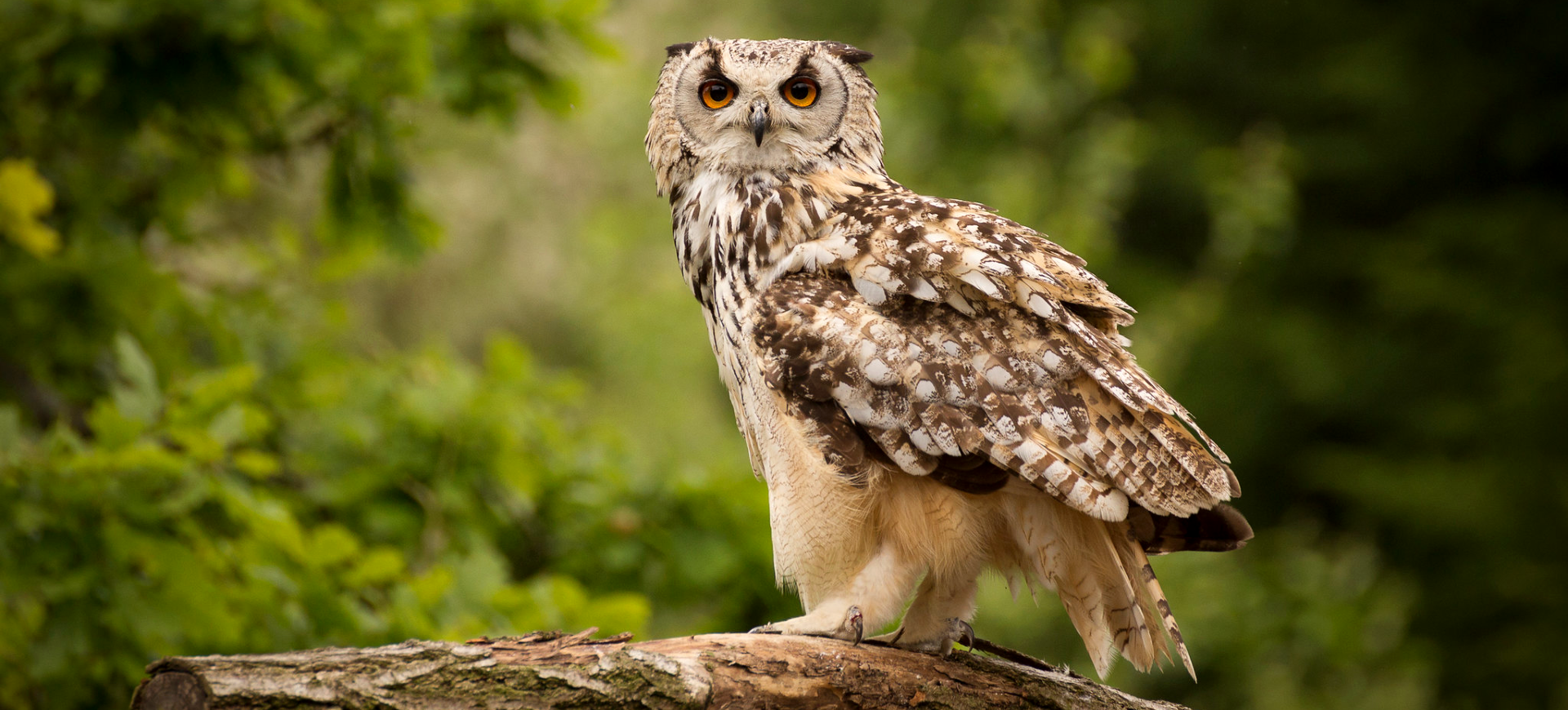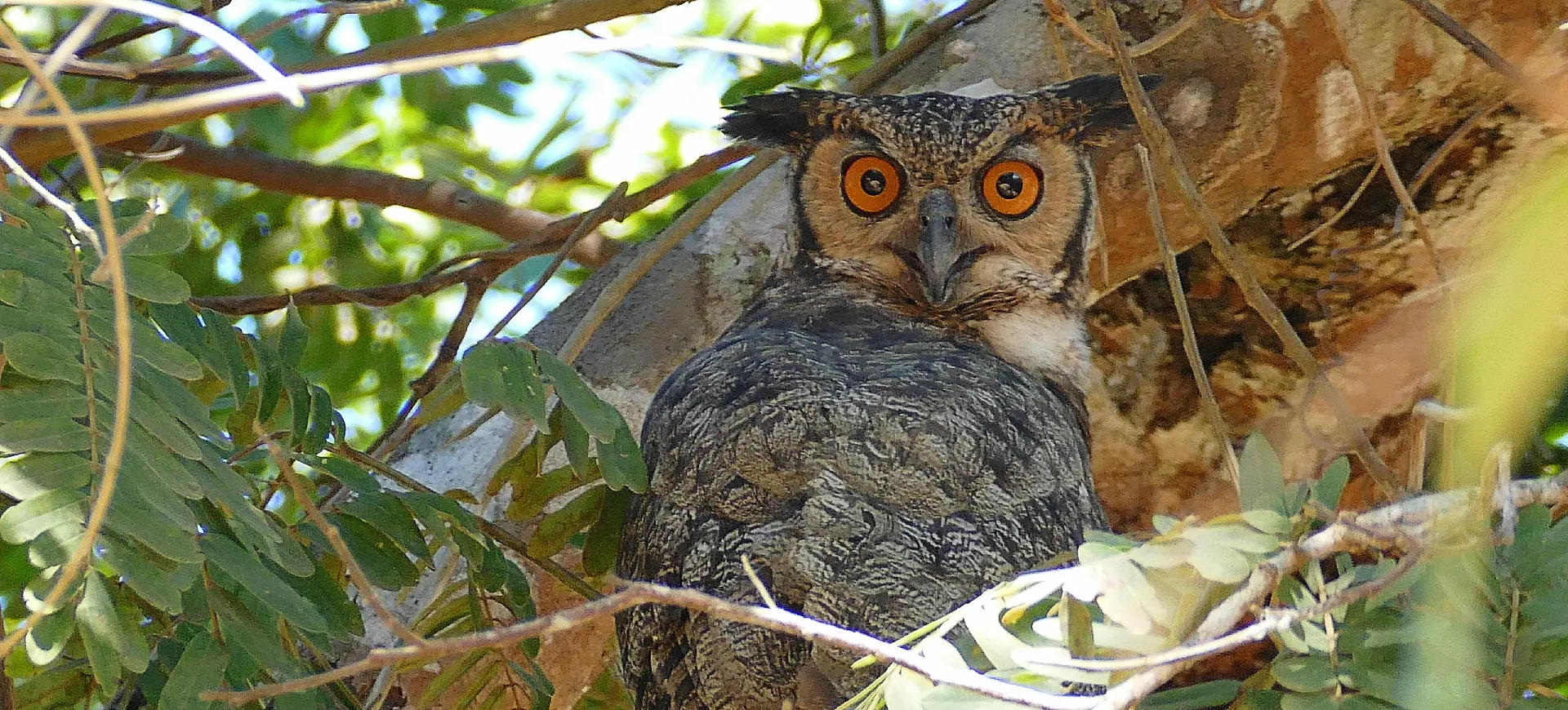Overview
The Burrowing Owl (Athene cunicularia) is a small, ground-dwelling owl native to the Americas, known for its long legs and distinctive habit of nesting in burrows. Unlike most owl species, it is active during the day, particularly at dawn and dusk, though it also hunts at night. It inhabits open landscapes such as grasslands, deserts, and agricultural fields, relying on abandoned burrows dug by mammals like prairie dogs and ground squirrels. This highly adaptable species can thrive in natural and human-modified environments, including golf courses and airport fields.
Burrowing owls have a diverse diet, feeding on insects, small mammals, reptiles, and even birds. They are skilled hunters, capturing prey by running, pouncing, or flying short distances from their perches. They also exhibit food-storing behavior, stockpiling prey in their burrows, especially during the breeding season. Their ability to consume various prey helps them survive in different habitats and changing environmental conditions.
These owls are known for their unusual defensive behaviors, including making hissing sounds that mimic rattlesnakes to deter predators. They communicate using a series of soft hoots, chirps, and clucking calls, which play a role in territorial defense and mating. While generally solitary or found in pairs, they may nest in loose colonies with abundant burrows. Habitat destruction and declining burrow availability due to land development and agricultural expansion are major threats to their population.
Taxonomy
Kingdom
Phylum
Class
Order
Family
Genus
Species
Type
Current distribution:
Burrowing Owls are widely distributed across North, Central, and South America. In North America, they are found in the western United States, Florida, Mexico, and parts of Canada. Their range extends through Central America and into South America, where they are common in the open landscapes of Brazil, Argentina, and Colombia. While some populations are sedentary, northern populations migrate south during winter to escape colder temperatures.
Despite their broad range, burrowing owl populations are declining in certain areas due to habitat destruction and declining burrow availability. In the United States, they are considered a species of conservation concern in some states due to agricultural expansion and urban development. However, they remain locally abundant in areas with protected grasslands or active conservation programs. Maintaining suitable nesting habitats and protecting burrowing mammal populations are key factors in their conservation.
Physical Description:
Burrowing Owls are small, with adults typically measuring about 9 to 11 inches in length. Their wingspan ranges from 20 to 24 inches, allowing for adept flight. The owl’s body is compact and rounded, with long, conspicuous legs unique among owl species. These legs are an adaptation to their terrestrial lifestyle and assist in their agility and speed.
The plumage of the Burrowing Owl is predominantly brown with white or cream-colored spots, which provides excellent camouflage in their natural habitat. Their faces are round and lack the typical ear tufts seen in many other owl species. The eyes are large and yellow, giving them a distinctive and alert appearance. Juvenile Burrowing Owls have similar but slightly less distinct markings compared to adults.

Lifespan: Wild: ~6 Years || Captivity: ~9 Years

Weight: Male: 4.9-8.5 oz (140-240 g) || Female: 5.3-9.6 oz (150-272 g)

Length: Male & Female: 7.5-9.8 in (19-25 cm)

Height: Male & Female: 9-11 in (23-28 cm)

Wingspan: Male & Female: 21-24 in (53-61 cm)

Top Speed: 30 mph (48 km/h)
Characteristic:
Native Habitat:
Burrowing Owls inhabit open areas with low vegetation, such as grasslands, deserts, and agricultural fields. They prefer habitats that provide a clear view of their surroundings to spot potential predators and prey. Their presence in a particular area often depends on the availability of suitable burrows, which they use for nesting and roosting.
These owls are adept at adapting to various environments, often residing near human-altered landscapes. They have been observed living in golf courses, airports, and other developed areas as long as their basic habitat requirements are met. Despite their adaptability, habitat loss and degradation pose significant threats to their populations.
Biomes:
Biogeographical Realms:
Continents:
Countries:
Diet:
Diet & Feeding Habits:
Burrowing Owls have a diverse diet that primarily includes insects and small mammals. They are opportunistic feeders, often preying on beetles, crickets, grasshoppers, and small rodents like mice and voles. Their hunting strategy involves catching prey in flight and foraging on the ground, showcasing their adaptability.
In addition to insects and small mammals, Burrowing Owls occasionally consume small birds, amphibians, and reptiles. They have been observed using dung to bait insects, demonstrating a unique and intelligent foraging technique. During the breeding season, the demand for food increases, and they may store surplus prey in their burrows. This caching behavior ensures a steady food supply for their chicks.
Mating Behavior:
Mating Description:
Burrowing Owls are monogamous, with pairs often remaining together for several breeding seasons. During courtship, males perform aerial displays and bring food to the females as part of their mating ritual. These rituals play a crucial role in pair bonding and the establishment of breeding territories.
Nesting typically occurs in caves, where the owls may excavate themselves or take over from other animals like prairie dogs or ground squirrels. The breeding season varies geographically but usually occurs in spring or early summer. The female lays a clutch of 4-12 eggs, which she incubates while the male provides food.
Reproduction Season:
Birth Type:
Pregnancy Duration:
Female Name:
Male Name:
Baby Name:
Social Structure Description:
Burrowing Owls are generally solitary or found in pairs, especially during the breeding season. They exhibit territorial behavior, defending their nesting and hunting areas from other owls. Outside the breeding season, they may gather in loose groups, especially in areas with abundant food resources.
The social behavior of Burrowing Owls includes a variety of vocalizations and physical displays. These behaviors are used for communication between individuals, particularly during the breeding season. Their social interactions are important for maintaining pair bonds and defending their territories against intruders.
Groups:
Conservation Status:
Population Trend:
The global population of Burrowing Owls is not precisely known but is believed to be in decline, especially in certain parts of their range. The primary cause of this decline is habitat loss due to agricultural development and urbanization. They tend to have stable populations in areas where their habitat is intact.
Efforts to monitor and assess the population trends of Burrowing Owls are ongoing. In some regions, especially North America, there has been an increased effort to conduct population surveys and research. These studies are crucial for understanding the species’ needs and implementing effective conservation strategies.
Population Threats:
The primary threat to Burrowing Owls is habitat loss and degradation. Expansion of agricultural land and urban development has led to a significant reduction in their natural habitats. Additionally, pesticides and rodenticides in agricultural areas can lead to secondary poisoning and reduce their prey availability.
Climate change threatens their survival, as it can lead to changes in their habitat and affect prey availability. Collisions with vehicles and predation by domestic animals, such as cats and dogs, also contribute to their mortality. Conservation efforts are focused on addressing these threats to ensure the survival of this species.
Conservation Efforts:
Conservation efforts for Burrowing Owls include habitat protection and restoration, as well as public education and awareness campaigns. Protected areas have been established in some parts of their range to conserve their natural habitats. In areas where their habitats overlap with human development, measures are taken to minimize disturbance and protect nesting sites.
Rehabilitation programs and captive breeding have been initiated in some regions to bolster wild populations. Research and monitoring are crucial components of conservation efforts, providing data on population trends and the effectiveness of conservation strategies. Collaborative efforts between conservation organizations, governments, and local communities are key to the successful conservation of this species.
Additional Resources:
Fun Facts
- Burrowing Owls are one of the few diurnal owl species, meaning they are active during the day, especially in the morning and evening.
- They can mimic the sound of a rattlesnake to deter predators from entering their burrows.
- Unlike most owls, Burrowing Owls have long legs, which they use for running and hopping on the ground, a unique adaptation among owls.
- They use animal dung to attract insects, which they capture and eat, showcasing an intelligent foraging strategy.
- While they do not have the same level of night vision as other owls, Burrowing Owls have excellent hearing to detect prey.
- These owls are often seen standing on one leg, a behavior thought to help regulate body temperature.
- Burrowing Owls sometimes decorate the entrance to their burrows with bits of colorful objects and trash, which might serve to attract mates or deter predators.
- Despite their ground-dwelling habits, Burrowing Owls are skilled flyers and can turn sharp to catch insects and other prey mid-air.
- They are highly adaptable and thrive near human habitation, often seen in open fields, airports, and golf courses.
- Juvenile Burrowing Owls engage in playful activities, such as tossing around small objects, which is rare among bird species and may help their development.


